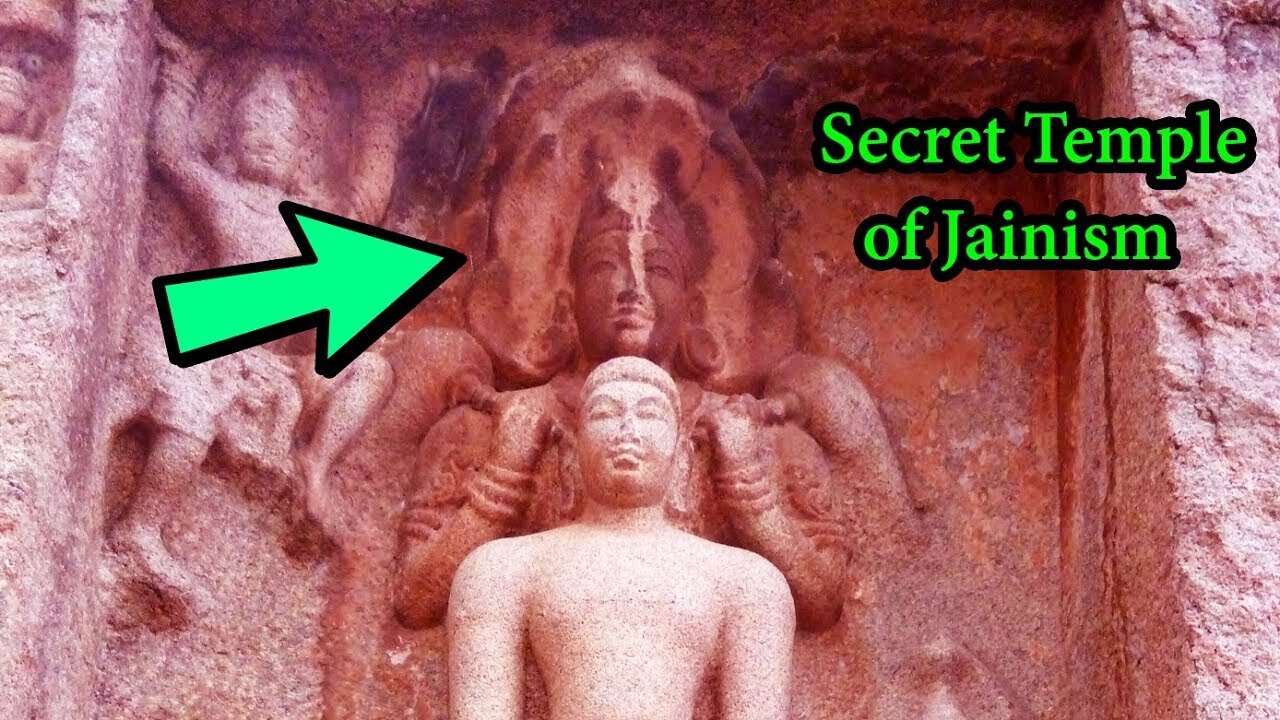Premium Only Content

1200 Year old Forgotten Jain Temple at Mountain Top - Kalugumalai, India | Hindu Temple |
Instagram :- https://instagram.com/praveenET
Twitter :- https://twitter.com/IamPraveenMohan
Email id :- phenomenaltravelvideos@gmail.com
This is my PayPal account if you would like to support me :- https://paypal.me/hindutvawadi
0:00 - A Unique Cave
0:27 - 1200 year old Jain Carvings
0:57 - Jainism
1:29 - Relief Carvings
2:28 - Fascinating Carvings
3:04 - Monolithic Temples
4:01 - Inscriptions in the Carvings
4:46 - Location for Meditation
5:31 - Jain Beds
6:16 - Abandoned Cave
7:02 - Conclusion
Hey guys, today let's take a look at this hill called Kalugumalai in India. On top of this hill, there are some of the most beautiful carvings, stone beds and a unique cave. Most people do not visit this part of the hill because it is bushy and these plants have thorns. But if you manage to walk through them, you can find about a hundred and fifty carvings and these are actually very ancient carvings, at least 1200 years old. You can see that these carvings are brilliant and have remained almost completely intact, even after 1200 years. These carvings belong to Jainism. Jainism is a very old religion and it has some of the most advanced spiritual principles and it once was a flourishing religion in India. Today, Jains make up just 0.4% of India. Jainism believes in the attainment of spiritual enlightenment and all these saints you see here are enlightened beings. I have shown you various types of rock cutting architecture in my videos, this is called a relief type architecture. This is a carving technique where the sculpted elements remain attached to a solid background of the same material - in this case the material is granite which is very hard, which is probably why you don't see much corrosion or degradation. But there is another reason why these figures are so well preserved - you see these rectangular slots above these carvings? Once upon a time wooden doors may have been placed using these slots, to cover these figures. This was a great way to preserve these carvings from rain and shine.
Some of the figures you see are quite fascinating, here you can see this Jain god called Parshvanath who is totally unclad and standing erect. Look at the reptilian Snake God Naga standing above him and completely protecting him. This is a female goddess known as Ambika. The reptilian God and this female deity also occur in Hinduism as well, so both religions do share some common ground. In fact, look at this brilliant Hindu temple known as Vettuvan Koil, it is located in the same hill and is very close to this Jain temple. This temple was created by scooping out the rocks from the hill, starting from top to bottom. This is the same technology used to build Kailasa Temple in Ellora Caves. Now, what is fascinating is that, Ellora caves also has Jain temples close to Kailasa temple just like what we see here. Is this a coincidence or is there a relationship between Jains and this type of architecture? Perhaps researching the history of Jainism could give us better insight into understanding these structures.
The Jain carvings in Kalugumalai have a specialty in them. Under many of the carvings, we can see writings. This is great because we don't have to do guess work and these writings will give us details about the carvings and even about the lifestyle of people who lived here. This is written in ancient Tamil language which is still the spoken language in this region. The inscriptions tell us that about 8000 Jains lived in this area and women enjoyed an equal, if not superior status to men. Here is another popular Jain figure called Bahubali, he stood in meditation for so long, that creepers and climber plants have completely taken over his body. Jainism preaches deep meditation to attain enlightenment.
#Jain #India #Search4Truth
-
 7:29:29
7:29:29
SpartakusLIVE
9 hours agoThe $1,000 Spartakus Gauntlet || Huskerrs and Twitty
105K1 -
 DVR
DVR
RalliedLIVE
9 hours ago $14.15 earnedHIGH OCTANE WARZONE SOLOS ALL DAY
95.7K4 -
 2:49:43
2:49:43
TimcastIRL
7 hours agoTrump Just ACCUSED Obama Of TREASON, Calls For CRIMINAL Charges | Timcast IRL
217K69 -
 10:19
10:19
MattMorseTV
12 hours ago $6.23 earnedTrump just went SCORCHED EARTH.
42.1K27 -
 2:37:18
2:37:18
Barry Cunningham
8 hours agoPRESIDENT TRUMP UNLEASHES HIS WRATH! NOW IT'S DEFINITELY GAME ON! HUGE TRADE WIN!
88.7K54 -
 1:27:56
1:27:56
Glenn Greenwald
10 hours agoSemafor Editor Ben Smith on Epstein Saga; How do MAGA Supporters Really Feel About Trump's Foreign Policy? Eddington Movie Review: Reflections on 2020 | SYSTEM UPDATE #490
152K71 -
 2:13:20
2:13:20
megimu32
7 hours agoOTS: Infomercial Insanity | 80s-00s Gadgets That Sold Big (and Made Us Buy)
39.4K7 -
 4:35:12
4:35:12
Amish Zaku
8 hours agoA Celebration of Ozzy Osbourne's Life, Music, and Spirit
35.2K8 -
 48:41
48:41
The Mel K Show
9 hours agoMel K & Aaron Day | Wake up! Walking Blindly into Totalitarian Technocracy | 7-22-25
54.9K18 -
 1:05:20
1:05:20
BonginoReport
11 hours agoEpstein: From “Case Closed” to “To Be Continued” - Nightly Scroll w/ Hayley Caronia (Ep.95)
153K82